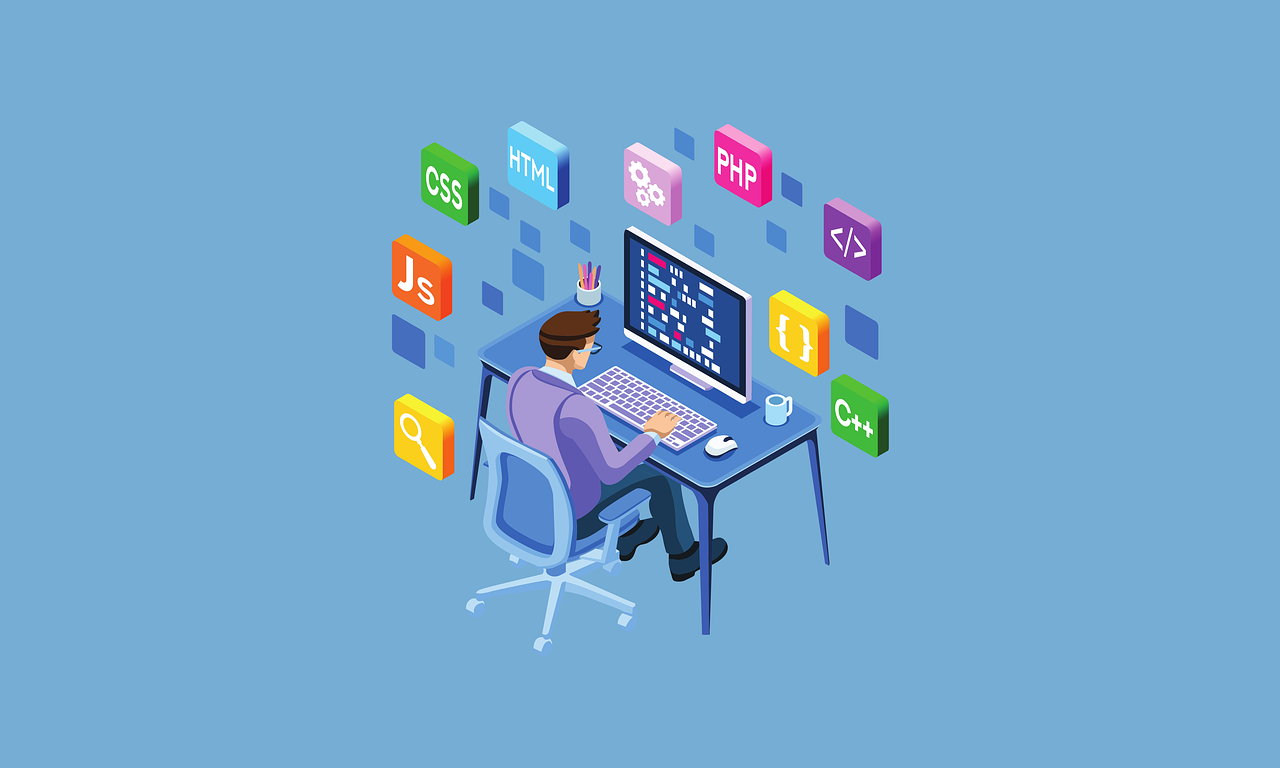Becoming a full-stack developer is a great career choice in today’s rapidly growing tech industry. With the increasing demand for professionals who can develop and maintain both the front-end and back-end of a website or application, it is essential to have a comprehensive understanding of various programming languages and technologies. This article will outline five steps to help you become a successful full-stack developer.
Table of Contents
Step 1: Familiarize Yourself with the Basics
The first step in becoming a full-stack developer is to have a solid understanding of the fundamentals of web development. This includes an understanding of HTML, CSS, and JavaScript, which are the building blocks of the front-end. You should also familiarize yourself with the basics of database management, such as SQL, and server-side scripting languages like PHP or Python. You can start by taking online courses or reading books to get a good foundation in these technologies.
HTML (Hypertext Markup Language) is the standard language used to create web pages and is the backbone of the front-end. CSS (Cascading Style Sheets) is used to style and layout the web pages, making them more visually appealing. JavaScript is a scripting language that is used to add interactivity and dynamic content to web pages.
SQL (Structured Query Language) is the standard language used to manage relational databases. It allows you to create, read, update, and delete records in a database. PHP and Python are server-side scripting languages that are used to build dynamic web pages and applications.
Step 2: Choose a Framework or a Library
Once you have a solid understanding of the basics, you should start focusing on a specific framework or library. Popular front-end frameworks include React, Angular, and Vue.js, while popular back-end frameworks include Ruby on Rails, Django, and Express.js. By focusing on one framework or library, you will be able to build more complex applications and gain a deeper understanding of the technology.
React is a JavaScript library used to build user interfaces. It is one of the most popular front-end frameworks and is widely used by companies such as Facebook, Netflix, and Airbnb. Angular is a front-end framework developed by Google and is used to build dynamic web applications. Vue.js is a progressive JavaScript framework used to build user interfaces.
Ruby on Rails is a back-end framework written in the Ruby programming language. It is known for its simplicity and ease of use, making it a popular choice for startups. Django is a high-level Python web framework used for building complex web applications. Express.js is a back-end framework for Node.js, a popular platform for building server-side applications
Step 3: Practice, Practice, Practice
The best way to learn how to become a full-stack developer is to build and work on real-world projects. Start by building small projects and gradually increase the complexity of your projects as you gain more experience. You can participate in online coding challenges or hackathons to improve your skills and stay up-to-date with the latest technologies. You should also consider contributing to open-source projects, as this is a great way to network with other developers and gain real-world experience.
Working on real-world projects will give you a deeper understanding of the technology and allow you to apply what you have learned in a practical setting. Building small projects and gradually increasing the complexity will help you to develop your skills and gain confidence in your abilities. Participating in online coding challenges and hackathons will give you the opportunity to challenge yourself and see how you stack up against other developers.
Step 4: Expand Your Knowledge
Full stack development involves a lot of technologies and it is important to continuously expand your knowledge and keep up with the latest trends and technologies. You should aim to learn a new programming language, framework, or technology every year. This will help you stay ahead of the curve and be prepared for future opportunities.
Additionally, it is important to understand the underlying principles of web development, such as RESTful APIs, server-side scripting, and database management. Familiarize yourself with version control systems like Git, and make use of online tools and resources like GitHub to collaborate with other developers and share your code with the world.
Step 5: Network and Collaborate
Finally, it is important to network with other developers and build your portfolio. Attending industry events, participating in online forums, and connecting with other developers on LinkedIn or other social media platforms can help you stay informed about the latest trends and technologies.
Having a strong portfolio is also critical in showcasing your skills and landing your dream job as a full-stack developer. Your portfolio should showcase the projects you have worked on, the technologies you have used, and the skills you have acquired. By building a strong portfolio, you will be able to demonstrate your expertise and stand out from the competition.
Conclusion
Becoming a full-stack developer requires dedication and hard work, but the rewards are well worth it. With the right combination of education, practical experience, and networking, you can achieve success and be a valuable asset to any team. Remember to start with the basics, focus on a specific framework or library, practice your skills, expand your knowledge, and build a strong portfolio. By following these five steps, you will be well on your way to becoming a successful full-stack developer.

